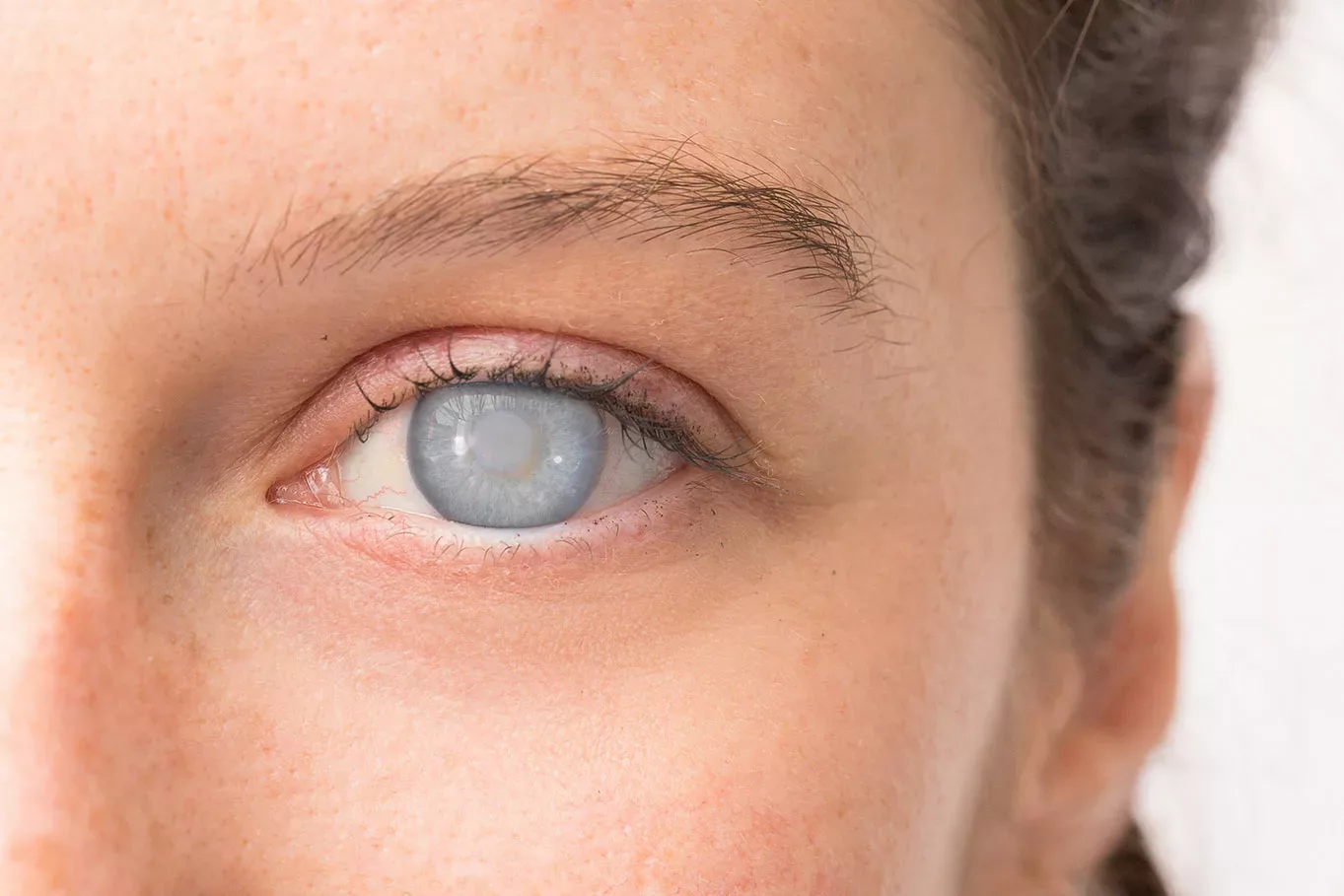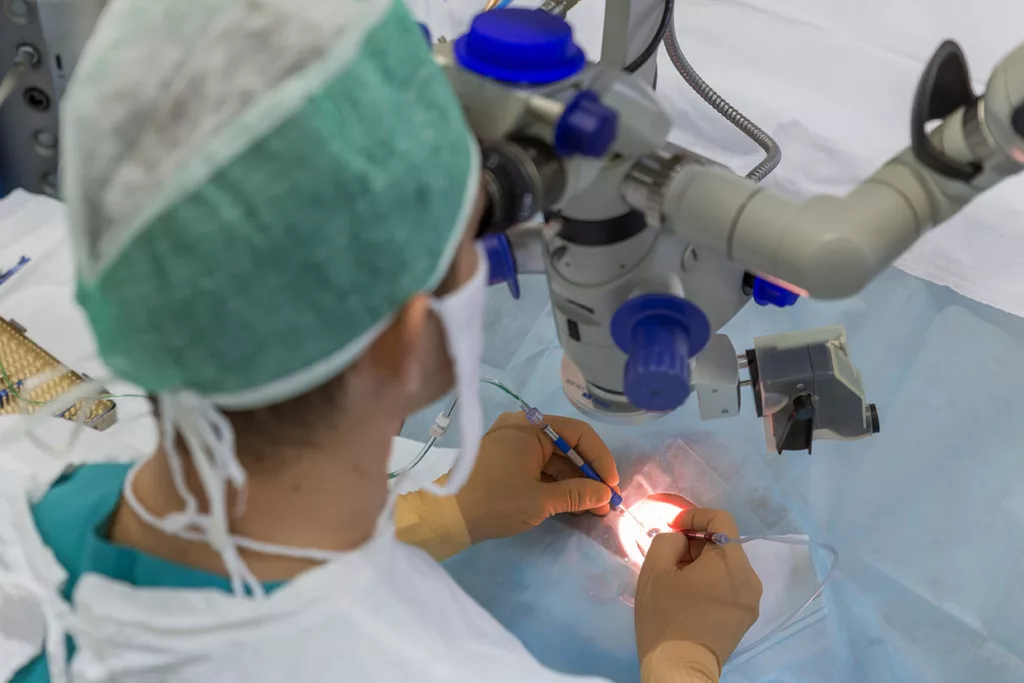
Cataracts are a very common age-related eye condition. Most 80-year-olds, according to the National Institutes of Health’s (NIH) National Eye Institute, either have cataracts or have had cataract surgery. In their advanced stages, they make vision cloudy and can eventually cause blindness, if left untreated. Fortunately, cataract surgery is a safe and routine outpatient procedure that millions of people undergo every year. With the prevalence of this age-related eye condition so high, you may be wondering at what age cataracts start developing. In this blog post, we’ll clearly define age-related cataracts, their symptoms, causes, and treatment, and at what age cataracts start to form.
What Are Age-Related Cataracts?
The most common type of cataract, called nuclear sclerotic cataracts, or age-related cataracts, occur when natural proteins build up on your lens. This protein buildup starts in the center of the lens and spreads and hardens, affecting more layers of the lens. The cataract eventually makes vision cloudy, because it interferes with the even transmission of light through the eye lens.
What is the Average Age to Develop Cataracts?

When women and men reach the age of 40, aging begins to contribute to age-related eye diseases such as cataracts. After the age of 40, your risk of cataracts continues to grow. According to the NIH, in the U.S., 2.51% adults ages 40-49 have cataracts. That percentage jumps to almost 25% for adults ages 65-69. Gender is also a factor, with women getting cataracts at a higher rate.
For example, at the ages of 65-69, 27.58% of women have cataracts, while only 21.53% of men in the same age range have them. The table below, taken from statistics provided by the National Eye Institute shows a breakdown of the percent of people with cataracts by age and gender:
| Age | Male Prevalence (%) | Female Prevalence (%) |
|---|---|---|
| 40-49 | 2.77% | 2.25% |
| 50-54 | 4.9% | 5.52% |
| 55-59 | 8.12% | 10.09% |
| 60-64 | 13.45% | 17.30% |
| 65-69 | 21.53% | 27.58% |
| 70-74 | 32.27% | 40.06% |
| 75-79 | 44.81% | 53.09% |
| 80+ | 63.14% | 71.24% |
What Causes Cataracts?
While age is the most common cause of cataracts there are many other risk factors associated with their development. Lifestyles and existing conditions that may hasten the formation of age-related cataracts include:
- Obesity
- Hypertension (high blood pressure)
- Smoking
- Years of excessive UV exposure
- Diabetes
- Extreme nearsightedness
- Past eye injury or inflammation
- Steroid use
What Are the Symptoms of Cataracts?
Typically, there are no early signs of cataracts. In the early stages of development, cataracts can have no symptoms and cause no vision issues. Many people go years without noticing symptoms of cataract development. An eye exam will reveal a cataract long before the patient notices any symptoms. Symptoms you may begin to notice as cataract growth progresses include:
- Blurry, cloudy, or dim vision
- Sensitivity to light
- Halos or visual glares
- Bad night vision
- Unstable vision prescriptions
- Double vision
- Requiring extra light to see
- Colors appearing faded or yellowed
Left untreated, cataracts can cause total blindness, so it’s important to address them to preserve your eyesight.
What Is the Treatment for Cataracts?

The only treatment for this degenerative eye condition is cataract surgery. During this procedure, your eye doctor will permanently remove the cataract and your natural eye lens, replacing it with an artificial lens. With an advanced Intraocular Lens Implant (IOL), you can permanently treat your cataracts and fix any other vision problems all at the same time.
Can Cataracts Be Prevented?
Cataracts are nearly as inevitable as wrinkles and grey hair. However, with a few lifestyle changes, you can reduce your risk factors of cataracts. Some of the best practices to help maintain healthy, youthful eyes include:
- Getting regular eye exams
- Wearing UV protective sunglasses
- Managing stress, if you have hypertension
- Smoking cessation, if you’re a tobacco smoker
- Eating a healthy diet, rich in superfoods that are good for your eyes
Schedule an Eye Exam to Monitor Your Eye Health
With age being the primary cause of cataracts, it’s important to have regular eye exams, especially after the age of 40. If you’re experiencing blurry vision or any other vision irregularity, it’s imperative to schedule an comprehensive eye exam as soon as possible. For over 28 years, board-certified ophthalmologist Dr. Shobha Tandon, MD, PhD has been helping patients reclaim their vision through cataract surgery. If you are looking for an eye doctor in Union City, NeoVision Eye Center is here to help.
Schedule an Eye Exam in Union City
Invest in your eye health today. Contact our specialists at NeoVision Eye Center via the form below to schedule a comprehensive eye exam.
"*" indicates required fields





